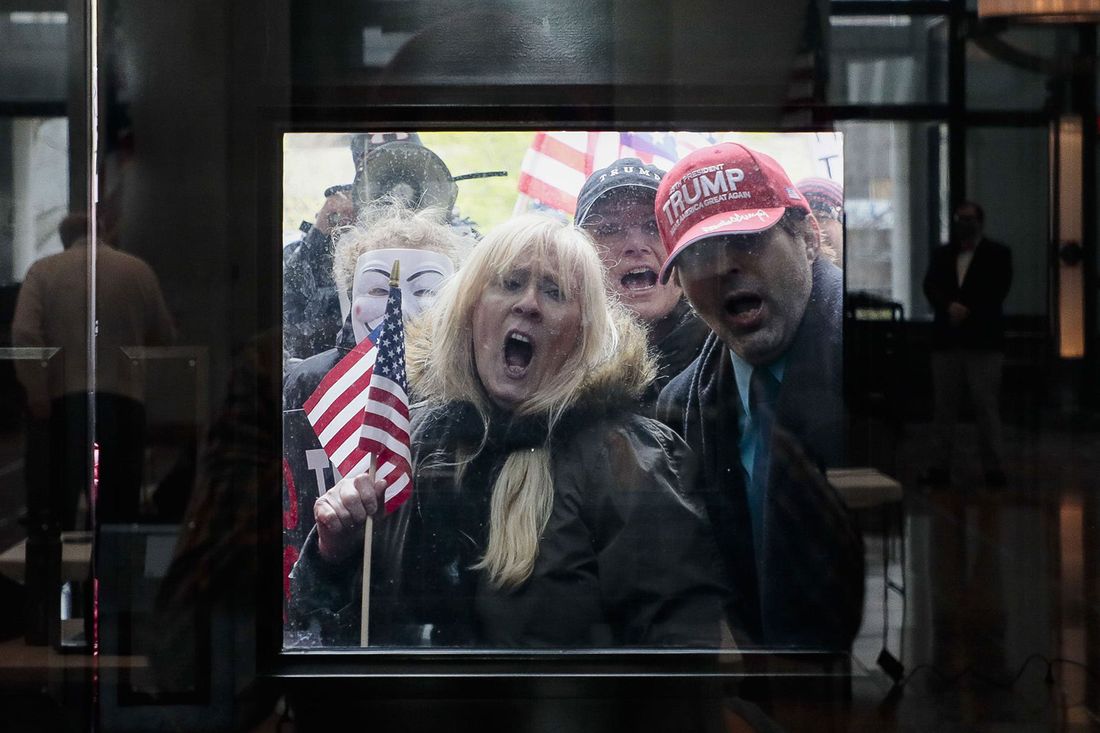
A few weeks ago, while the United States was becoming the global epicenter of this nightmare pandemic, Donald Trump began to spread his own contagion. He started talking about “reopening” the economy, like a golf course after a good mowing. He said he wanted it done by Easter, ignoring the warnings from public-health officials that this could kill thousands of people. As his message spread, it mutated into something more explicitly fatal. Within days, Texas lieutenant governor Dan Patrick was calling on Americans to sacrifice their lives, insisting on Fox News that grandparents across the country should be proud to die from the coronavirus — a lonely, gasping demise — if it meant the younger generations could get back to work. Other Republican lawmakers have followed suit; one recently said that getting Americans back to their business was “the lesser of two evils.”
And now this dangerous idea that Americans should put their lives at risk in order to stimulate the economy has become a plague, spreading to protesters in Michigan and Ohio. In Lansing, the angry citizens stayed in their cars, but in Columbus, they took Trump’s message almost literally, descending on the state capitol in a tightly packed throng earlier this week. The group of about 100 people resembled a zombie horde, pressing their bodies close together and up against glass windows, mouths contorted under red hats and American-flag shirts. They pounded the doors, demanding to see the governor. They said it was layoffs and furloughs that were putting them in danger, not the virus. They called themselves patriots. They blamed the World Health Organization. They shot at a piece of paper from the governor with a rifle.
Maybe the people in this photo don’t know anyone who has died. Or maybe, in a country all but stripped of its social safety nets, with leaders who talk with more conviction about saving profits than human lives, financial ruin seems like a fate worse than death. In a world where people have suddenly been forced to wait in line, six feet apart, for up to an hour just to get into the grocery store, where residents in many states are legally required to wear a mask if they go outside, the protests in Ohio and Michigan take on a chilling unreality. The sight of so many people, breathing on each other, raging not about the virus we know kills with such cruelty but about the precautions against it, feels like something from science fiction.
From California to Italy, South Korea to Kenya, governments have been dealing with the huge strain the novel coronavirus puts on public-health systems by issuing stay-at-home orders. It is a solution of last resort, as many have pointed out. It’s not even a solution; in the U.S., it has been a break-the-glass, last-ditch effort put into place weeks too late, and with scant forethought, long after the window to implement earlier control methods like widespread testing had slammed shut. Mandating that residents with nonessential jobs remain at home has devastated the economy; over 22 million people have filed for unemployment in the past three weeks. A new emergency lending program for small businesses has already maxed out. But epidemiologists and experts agree that maintaining drastic social-distancing measures is our only hope right now of slowing the spread of a virus that has killed 10,000 people in New York City alone. This is why the Tokyo Olympics have been canceled, why schools have shuttered, why people can’t even bury their dead, let alone spend time with the grandparents Patrick suggests should die heroes.
The shutdowns are depressing and maddening, and create extreme anxiety even among the financially secure—not to mention the recently laid off or furloughed. No one knows exactly what this will do to the economy in the long run. Rent is still due each month for millions of Americans who have lost their income, many of whom were already burdened by paying bills and feeding families, in low-wage and gig economy jobs with no benefits. We don’t know if stay-at-home orders will sufficiently curb this mess, but so far they are our best option, according to scientists.
Ohio has lost 248 people so far; in Michigan, it’s been more than 1,700. Statistics would point to those numbers going up. But even when they do, it’s unlikely that Trump will stop his reckless calls to ignore the experts and soldier on. Last week, as New York dug mass graves and national coronavirus cases topped half a million, he shout-tweeted, “WE CANNOT LET THE CURE BE WORSE THAN THE PROBLEM ITSELF.” He has shared projections of thousands of deaths as “goals,” rather than preventable tragedies. He has spoken of his own “absolute authority,” and falsely claimed that states are powerless against his mighty will. Each time, the propaganda machine gets to work. Laura Ingraham tweets that it’s time to “get your freedom back.” GOP legislators blame big government while the zombie-in-chief tells us not to be afraid.
Of course, fear is exactly what Trump is counting on. As he announces his sunny-sounding “Opening Our Country Council,” he trades on panic and rage, the emotions we are all feeling most acutely during the pandemic. He wants to make getting back to business seem like our best coronavirus antidote. We cannot let his “cure” eat our brains.





